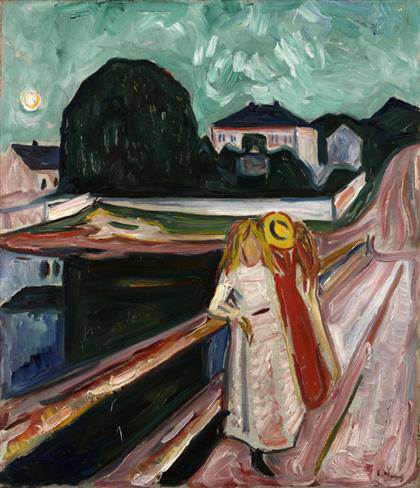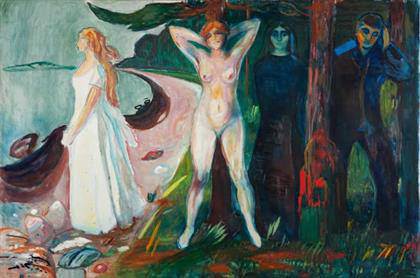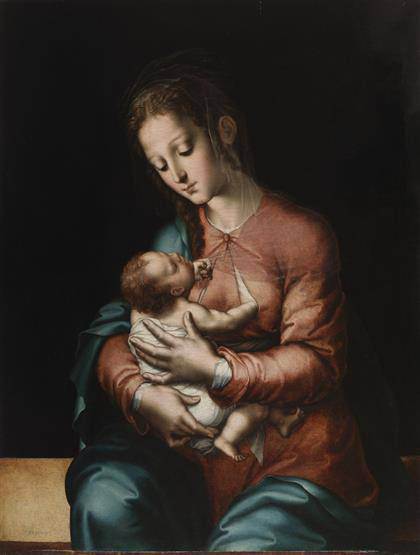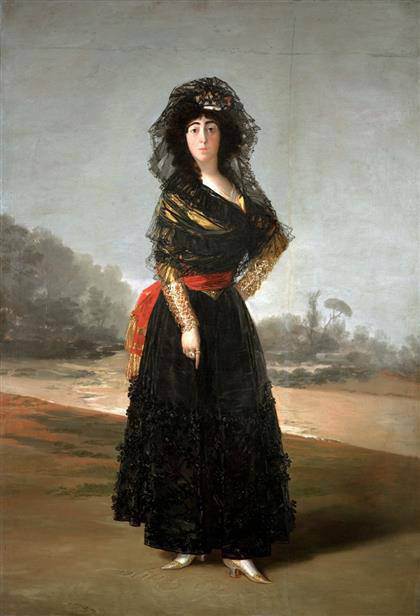
Edvard Munch: Girls on a pier, 1904. Kimbell Art Museum

Edvard Munch: Woman, 1925. Munch-museet, Oslo
Thyssen Museum presents ‘Edvard Munch. Archetypes’ The Museo Thyssen-Bornemisza is hosting Edvard Munch. Archetypes, the first exhibition to be held on the Norwegian artist in Madrid since 1984. From 6 October 2015 to 17 January 2016.]]>
Source: Museo Thyssen-Bornemisza
Closely linked to the literary and artistic circles of his day throughout his lifetime, Edvard Munch contributed with his oeuvre to the advancement of modernity that took place in all areas of European culture in the late nineteenth century, together with prominent figures such as Norwegian dramatist Henrik Ibsen, Swedish writer August Strindberg and German philosopher Friedrich Nietzsche.
Much’s art stems from a particular mixture of artistic traditions, progressive literary trends and esoteric speculations – not to mention Nordic myths – with which he creates a modern mythology with a determined experimental approach ‘against the current of the modern style’, as he stated. Using archetypes, primeval images of human behaviours, Munch succeeds in establishing multiple relations between the external signs of the physical world and the most hidden spiritual dimension.
The exhibition brings together a total of eighty works – many of them never previously shown in Spain – which span the Norwegian artist’s long and prolific career. Half of the loans are from the Munch-Museet in Oslo and the rest belong to other prestigious institutions from all over the world, such as the Kunsthaus in Zurich, the Kunstmuseum in Basel, Tate London, the MoMA in New York and the National Gallery of Washington, as well as a few international collections such as the Museo Thyssen-Bornemisza, the only one in Spain to own works by Munch both in its permanent collection and on deposit from the Carmen Thyssen-Bornemisza Collection.
The exhibition layout is based around this large repertoire of emotional archetypes (melancholy, love, death…) and the various settings in which they are depicted (the coast, the sickroom, the abyss, the forest, night, the artist’s studio), combining early works with later versions, graphic work and paintings throughout the show in order to underline the thematic and existential circularity of his oeuvre.
Related content
‘Edvard Munch: The Modern Eye’ at Tate Modern (exhibition, 2012)
Follow us on:


